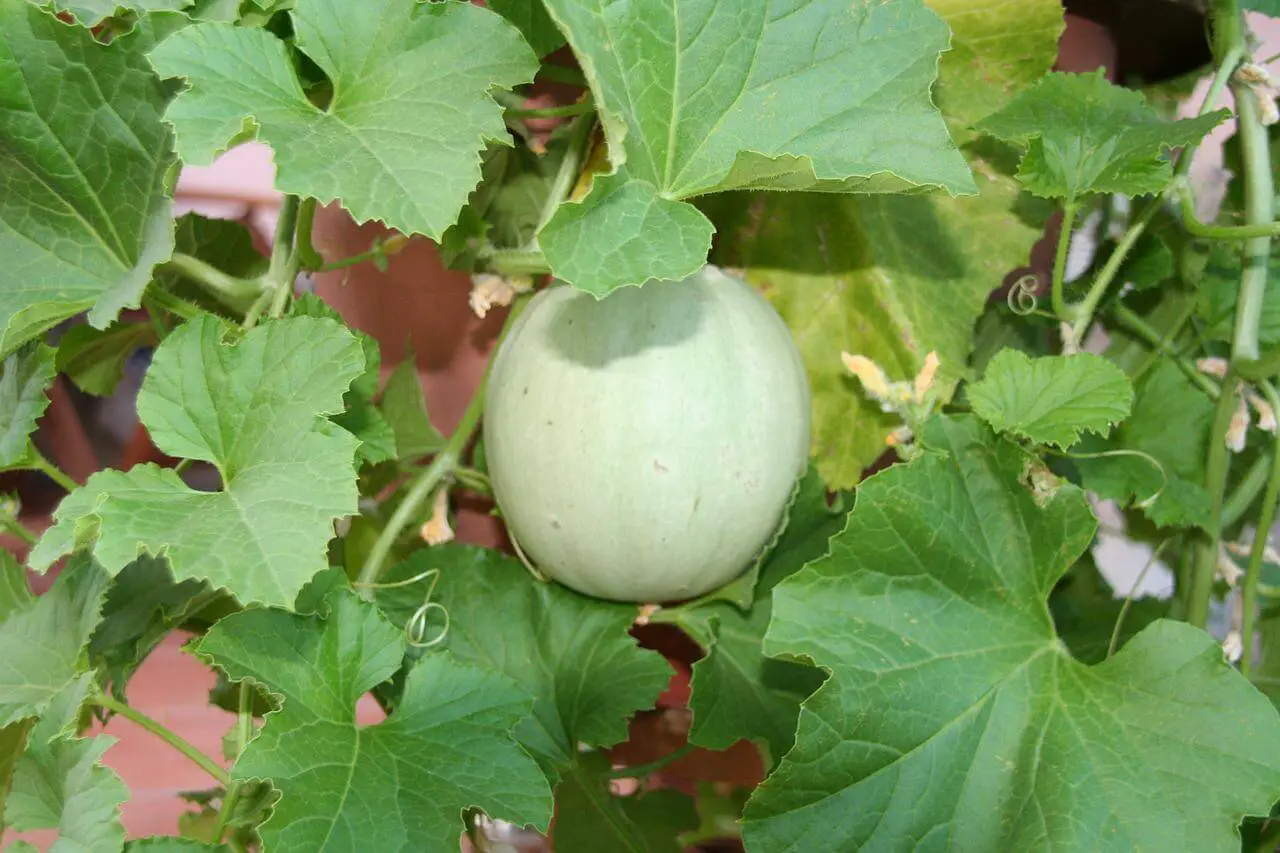A Guide to Growing Melons Vertically
August, 2022 |Melons are a fantastic crop that can grow vertically in a mini garden space. Their long trailing vines can be trained to grow up a trellis or vertical support. When space is limited growing melons vertically is the best way to maximize every inch of garden space, whether you’re growing melons on a balcony, or in a small garden.
Disclaimer: This post contains affiliate links. When you make a purchase through one of these links I may earn a commission. This comes at no extra cost to you.
Best melons to grow vertically
Watermelons, muskmelons, or cantaloupes, all melon types can be grown vertically. It’s usually just a choice of picking a variety that’s suited to your climate. Most melon varieties need 75 to 90 degrees Fahrenheit to thrive, but there are some cooler climate melon varieties to choose from.
If space is really limited, mini melon varieties are an ideal choice for vertical gardens as the fruits are easier to manage. Plus, because the fruits are smaller, the plant will often produce more melons!
Large to medium-sized melons are heavy feeders and will need large containers full of nutritious compost. So if space is limited, small melon varieties are a great alternative. They will still need lots of nutritious compost, but usually not in the same quantity as larger melons.
Our favorite mini melons:
- Sugar cube
- Minnesota Midget
- Alvaro melon
Our favorite melons for cooler climates:
- Sugar baby (matures in 75+ days)
- Blacktail Mountain (ripens in USDA hardiness zone 3-4)
- Jenny Lind (matures in 70+ days)

Where to position your vertical melon plant
Melons need as much sunlight as possible — they’re definitely not a shade tolerant crop. They’re thought to be native to Africa and parts of southwest Asia where the climate is tropical, so you need to make sure your vertical melon plant is in the sunniest spot of your garden or balcony. Especially if you’re growing melon plants in a cool climate.
The recommended amount of sunlight for most crops is 6-8 hours, however, melons definitely need at least 8 to produce lots of flowers and fruits. One of the benefits of growing melons vertically is that your plants may be exposed to more sunlight the higher they grow.
Vertical supports for melon plants
As melon fruits begin to swell and ripen, the entire plant can become heavy, so sturdy vertical support is essential. You can use an a-frame or arched trellis, or create a DIY frame using poles and strong twine.
Popular vertical melon supports include:
- A wooden trellis panel
- Netted wire frame
- A wire cage (with easy access)
- An arched or a-frame trellis
- A pergola
This planter combined with a trellis that you can find on Amazon is also a great option for growing melons vertically. You could grow two different melon varieties side by side or even a mini pumpkin variety!

Make sure the support is at least 4-6ft tall (1.8m is best), as the vines will grow long! Some more compact varieties, like the mini Honey Bun Hybrid, may be able to cope with shorter support. You can push these supports straight into a garden bed (in a sunny spot), or into a container.
If you have a small greenhouse you could also support melons vertically using the string trellis method. Attach a length of string to the roof and then to a pin or peg that you push firmly into the soil/compost. Then as the melon vine grows you can attach This method could also work if you have a bracket attached to an outdoor wall (at least 6ft high).

Best container size for growing vertical melons
Melons need lots of moisture and nutritious compost, so if you’re using a pot, choose the biggest container your space can manage. Generally, a 5-gallon (20-25 liter or 14-17 inch width) container is plenty.
A deep container is best. This is because melon roots can grow pretty deep and also your container needs to hold the width of whichever support you’re using. This round classic planter from Amazon is a great option.
Placing the container near a wall can provide some extra protection in high winds. The wall can also reflect some residual heat onto the plant which is really useful in cooler climates.

Planting melons and tying them to supports
You can grow melons straight into the soil of your garden. Just make sure you mix in some organic feed and mulch the surface around your melon plant once it’s established to keep moisture in.
If you live in a cooler climate (USD hardiness zones 3-6) it’s usually worth starting seedlings off indoors in spring, and then planting them out a week or so after the last frost.
You’ll need to plant the seedlings close to the supporting frame so that you can easily tie the vine in with string or twine as it grows and becomes established. The tendrils will start to wrap around the supports too.
For tying in, you could use a string like this jute twine from Amazon or a roll of garden plant wire.
Melon slings and hammocks
As melons begin to grow, you may need to create a melon sling or hammock to support the weight of the heavy fruits. This saves your balcony or deck from falling melons, although fermenting watermelon is a great way to attract butterflies to your garden!
Heavy melons can weaken the vine and even snap, causing you to lose all the hard work you have put into nurturing the plant. Generally, any melons over 3lb should be supported, so even a mini melon might need a sling. These reusable melon slings from Amazon are a great option for supporting heavy fruits.

Growing tips for vertical melons
Here’s a summary of all the tips to make sure your vertical melons really thrive.
- Consider choosing a mini melon variety for really small garden spaces.
- Melons need lots of nutritious compost and water so choose a good-sized container, or add plenty of compost and organic fertilizer to the soil.
- Place your melon plant in the sunniest position possible.
- Mulch the soil around the base of the plant to keep moisture in and to conserve water.
- Hand pollinating is a way to guarantee that your melon plant will produce more fruits, so use a paintbrush to move pollen from the male to the female flowers.
- Keep your melon plants well-watered, but don’t let the soil get too waterlogged.






